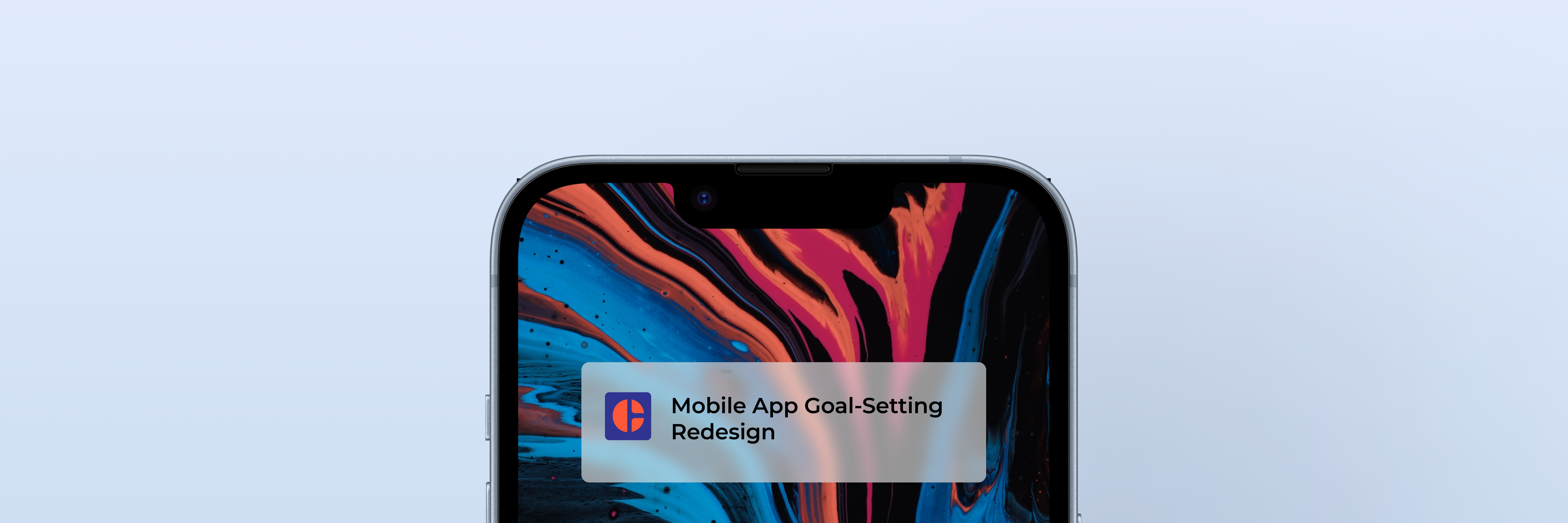
As the lead product designer for this discovery project, my pivotal responsibilities included:
- Product Design Leadership
- Usability Testing Facilitation
- Prototyping
- Stakeholder Management
- Wireframing
- Production Asset Design
The Project
The mobile app redesign was conceived as a pure discovery project, utilizing the app as a strategic experimental platform. This lean, agile environment allowed us to test and validate design hypotheses through rapid, focused iterations without any predetermined solutions. Each two to three-week experiment served our discovery goals by helping us:
- Generate quick, actionable insights from scratch
- Test early-stage design concepts with minimal resource investment
- Create a flexible framework for exploring new possibilities
- Validate potential directions before making any implementation commitment
By treating the mobile app as a living laboratory for discovery, we could:
Rapidly prototype different goal-setting approaches without preconceptions
Gather real-user feedback quickly to inform our exploration
Iterate design solutions with minimal risk while learning
Explore innovative user experience concepts in an open-ended way

The context
CoachHub's mobile app faced a critical engagement challenge: while 50% of users downloaded the app, only 10% actively used it.
The existing mobile app mirrored the web platform's design, creating a user experience that offered no mobile-specific value. Users predominantly preferred the web platform, primarily because coaching sessions occurred in office or home environments.
Business Rationale
The project aimed to transform CoachHub's mobile app from an underutilized tool into a strategic business asset by addressing critical user engagement challenges.

Research and discovery
The research phase involved five cross-functional stakeholder interviews to gain comprehensive insights into the app's challenges. An internal survey revealed critical pain points in goal setting, with users feeling unsupported and forced to use external tracking tools.
By focusing on mobile design, we saw an opportunity to create a user-centric goal-setting solution that could potentially improve the entire platform. The research highlighted three key issues:
- Difficulty defining clear, measurable goals
- Minimal structured goal-setting support
- Disconnection from the coaching experience
This concise version preserves the core research findings and strategic insights while reducing the overall word count.
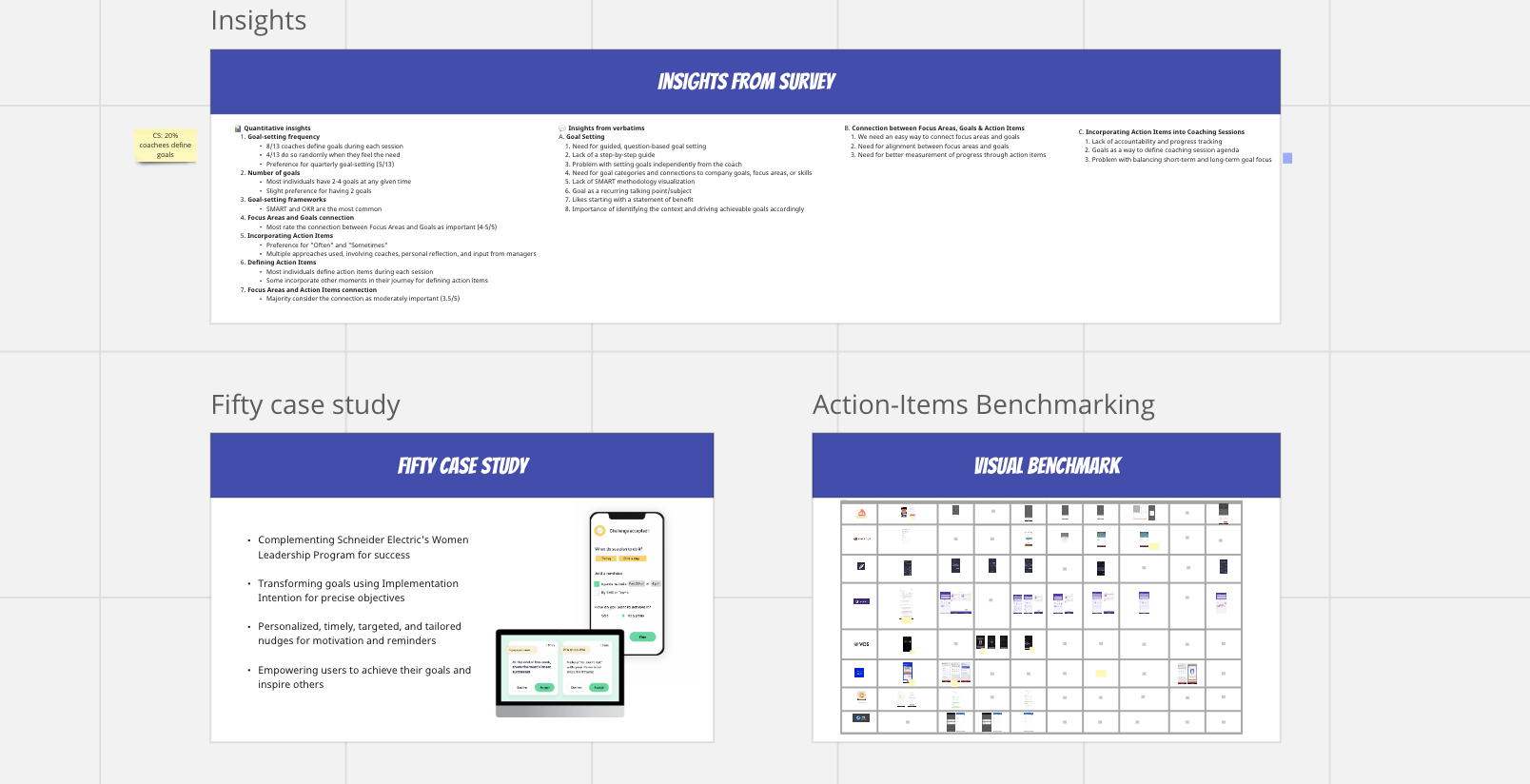
Ideation
Armed with these insights, I facilitated an ideation workshop that transformed research into actionable design principles. We generated four distinct concept approaches, ultimately selecting the most promising solution through collaborative voting. This democratic design process ensured our solution was grounded in collective expertise.

Concept Development and Prototyping
Our mid-to-high-fidelity prototype emerged from the most compelling concept developed during our ideation workshop. The design addressed key user pain points identified in our research.
Before Re-concepting:
- No goal creation guidance
- Unclear progress tracking
- Undefined milestone processes
- Disconnected focus areas
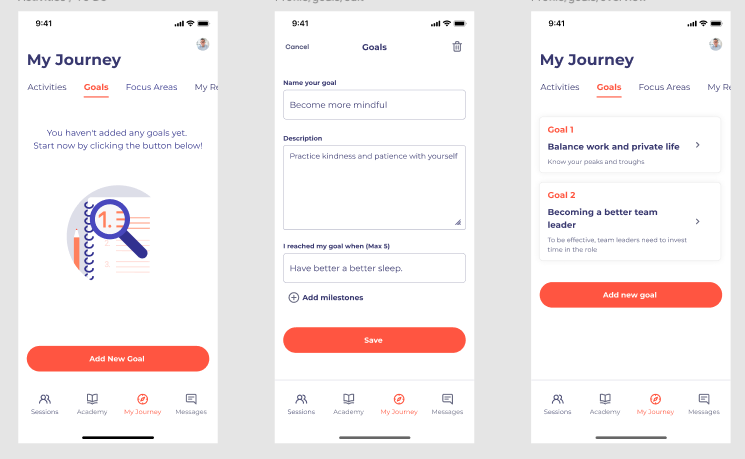
After Re-concepting:
- Push notification reminders
- Guided goal-setting workflow
- Introductory goal-setting screen
- Multiple goal creation pathways
- Step-by-step coaching support
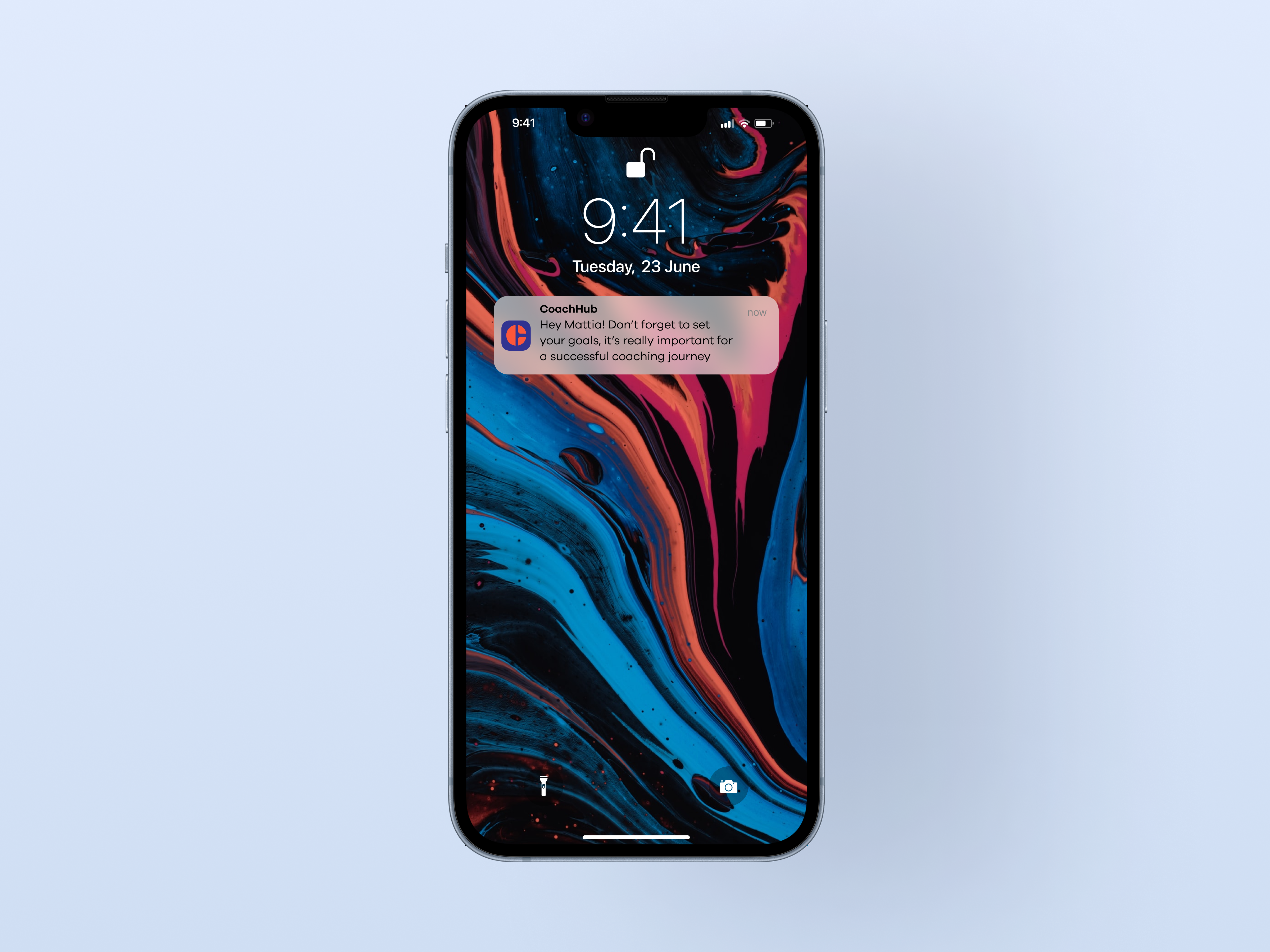
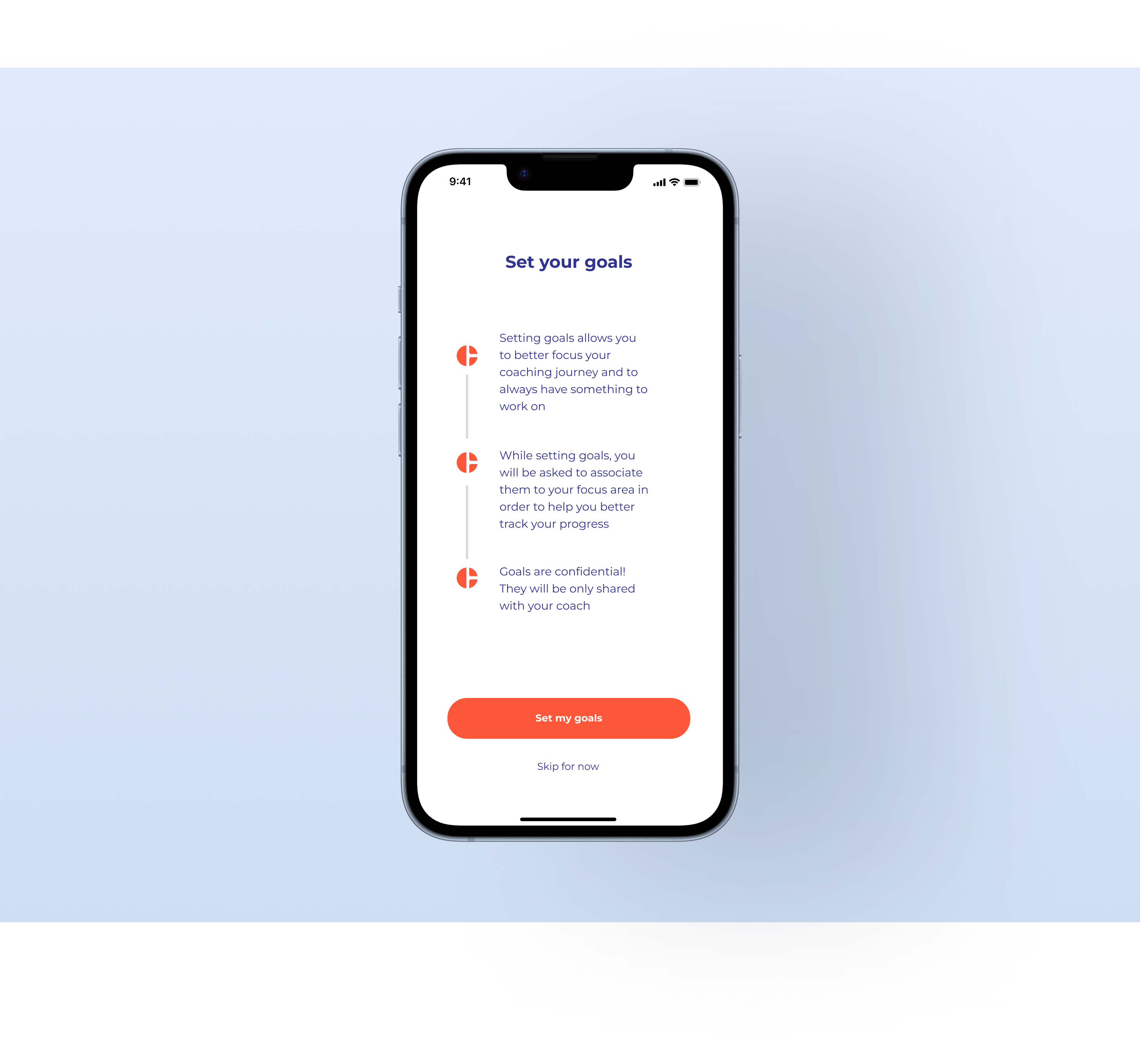
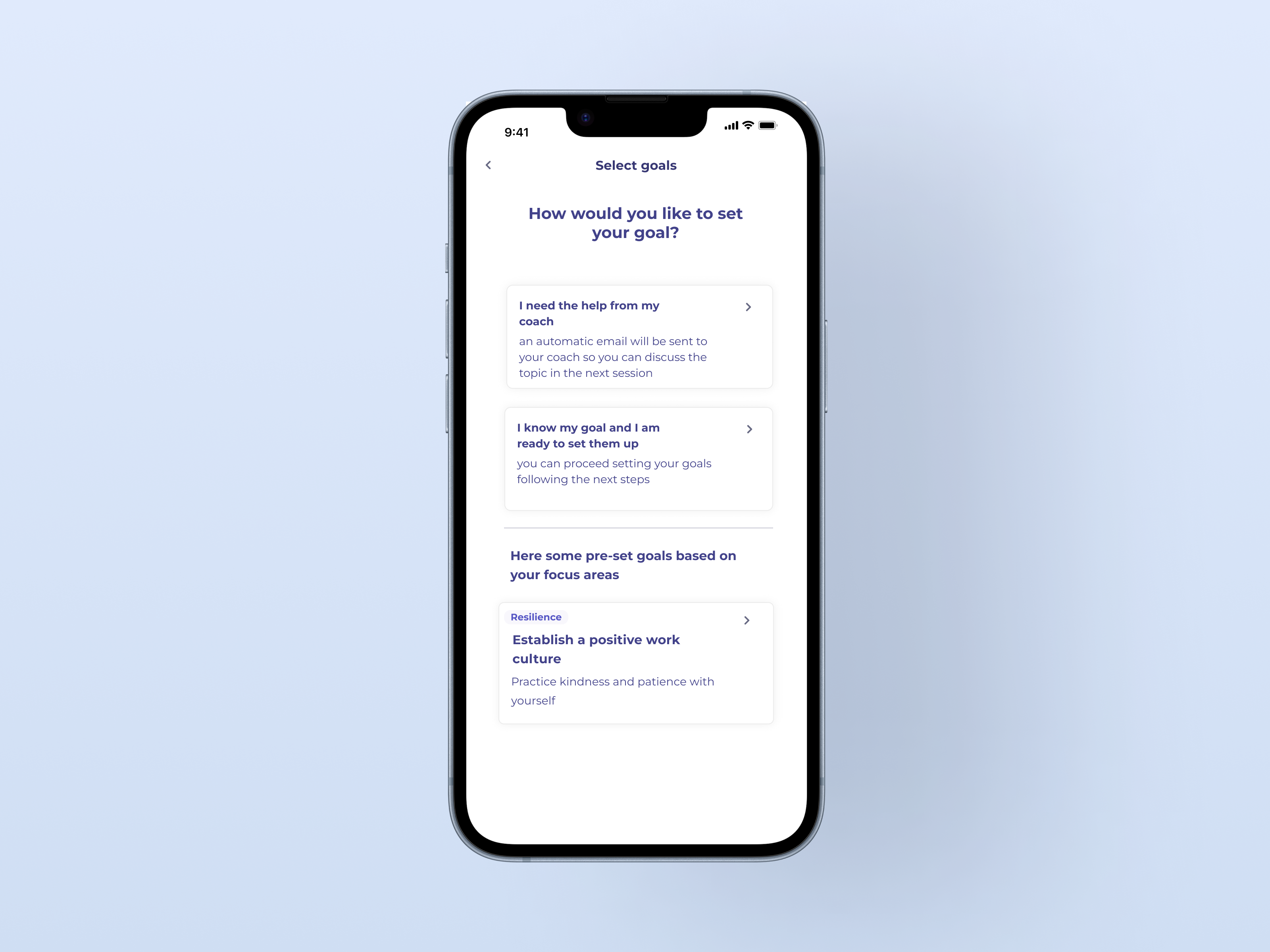
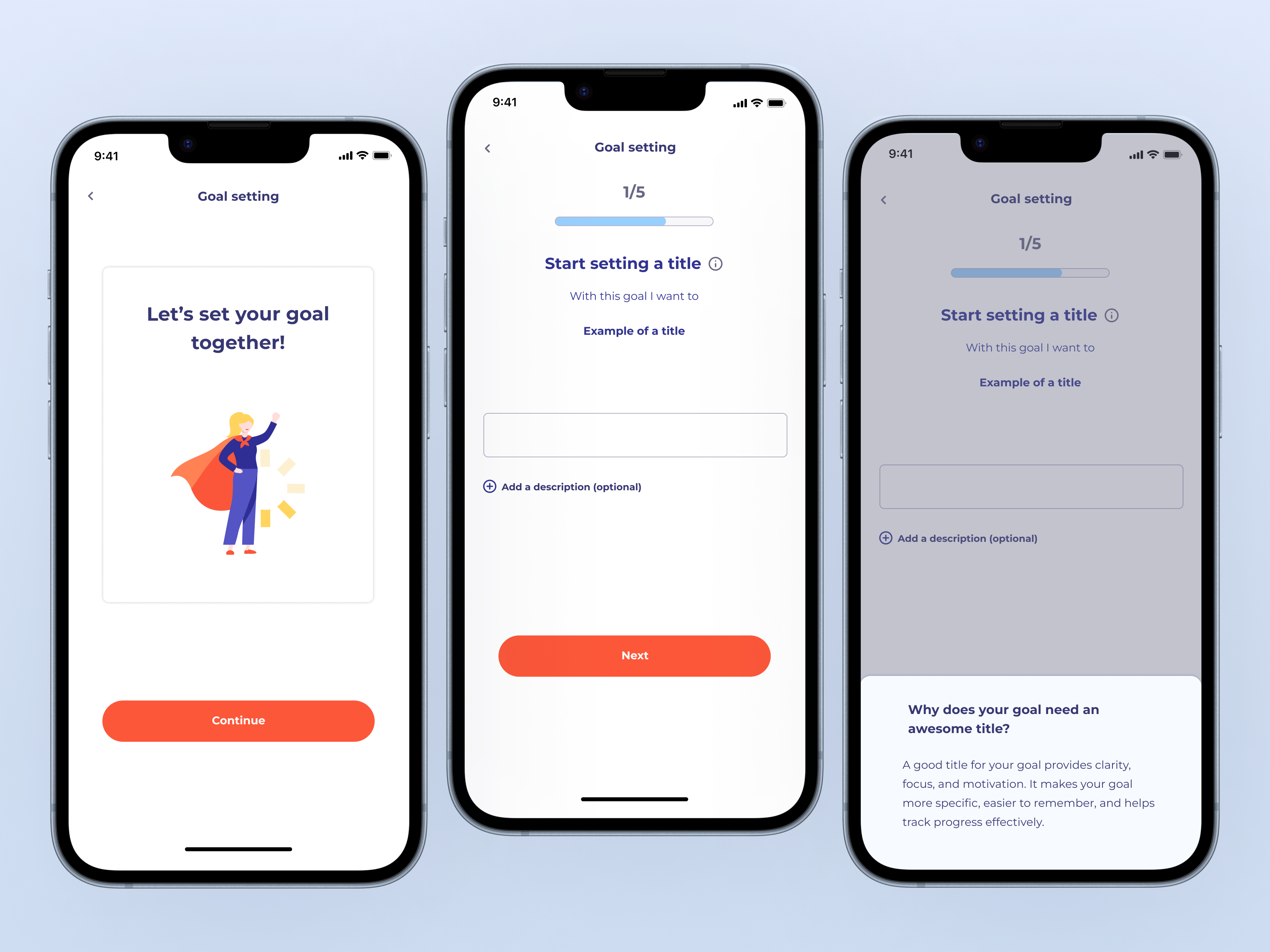
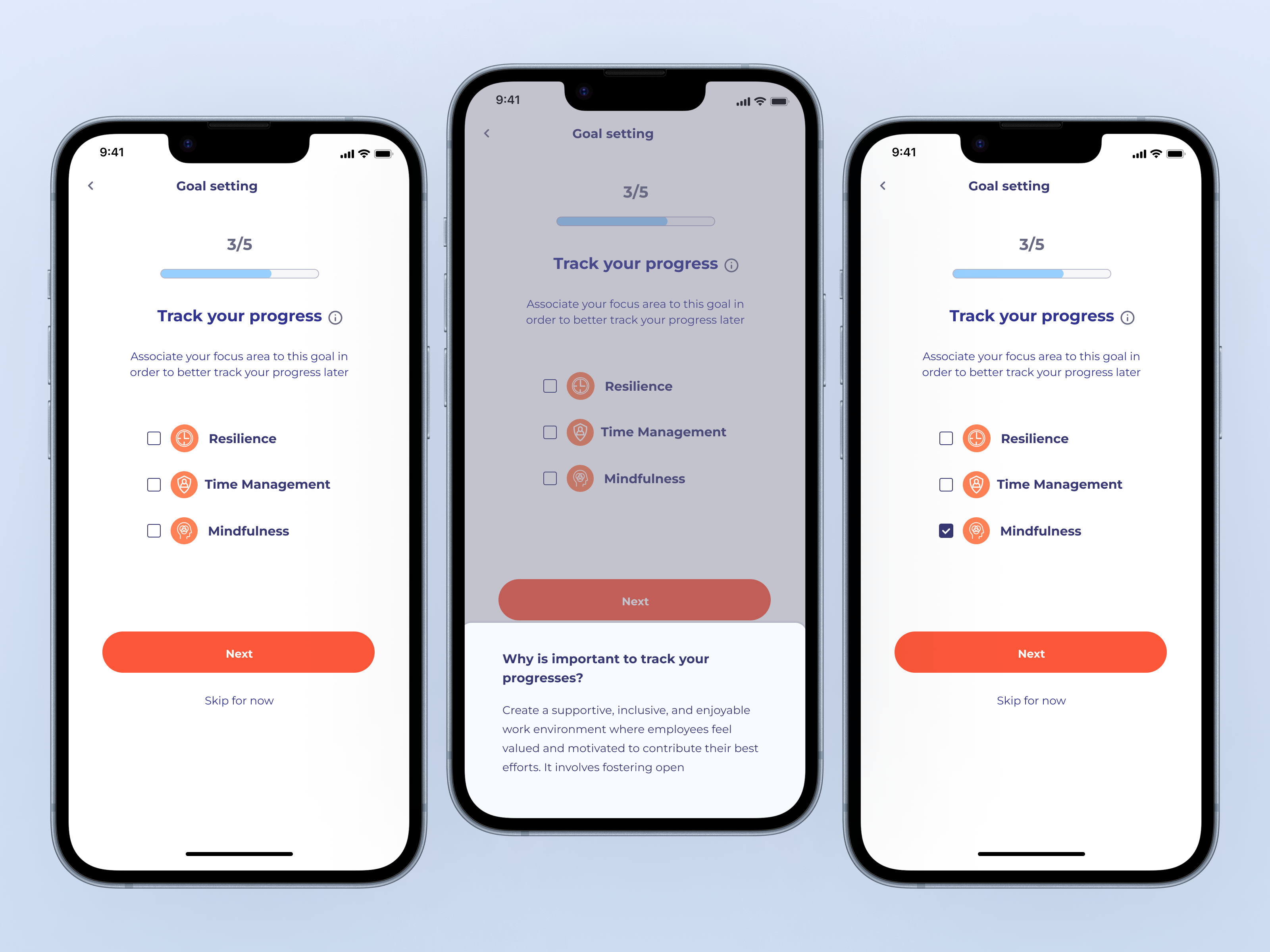
Testing
We conducted 10 internal user tests with the goal of:
- Assess design usability
- Validate core concept
- Identify potential improvements
Each test revealed nuanced insights:
- Refined wording for clarity
- Adjusted interaction flows
- Enhanced guidance mechanisms
- Improved overall user comprehension
What worked
- Small experimentations
- Collaboration within the core team
- Collaboartion with the supporting teams
- Engagement with the rest of the company
What didn't
- Internal user testing
- Limited leads availabilities
- Limited Tech Team Engagement
- Quantitative Data
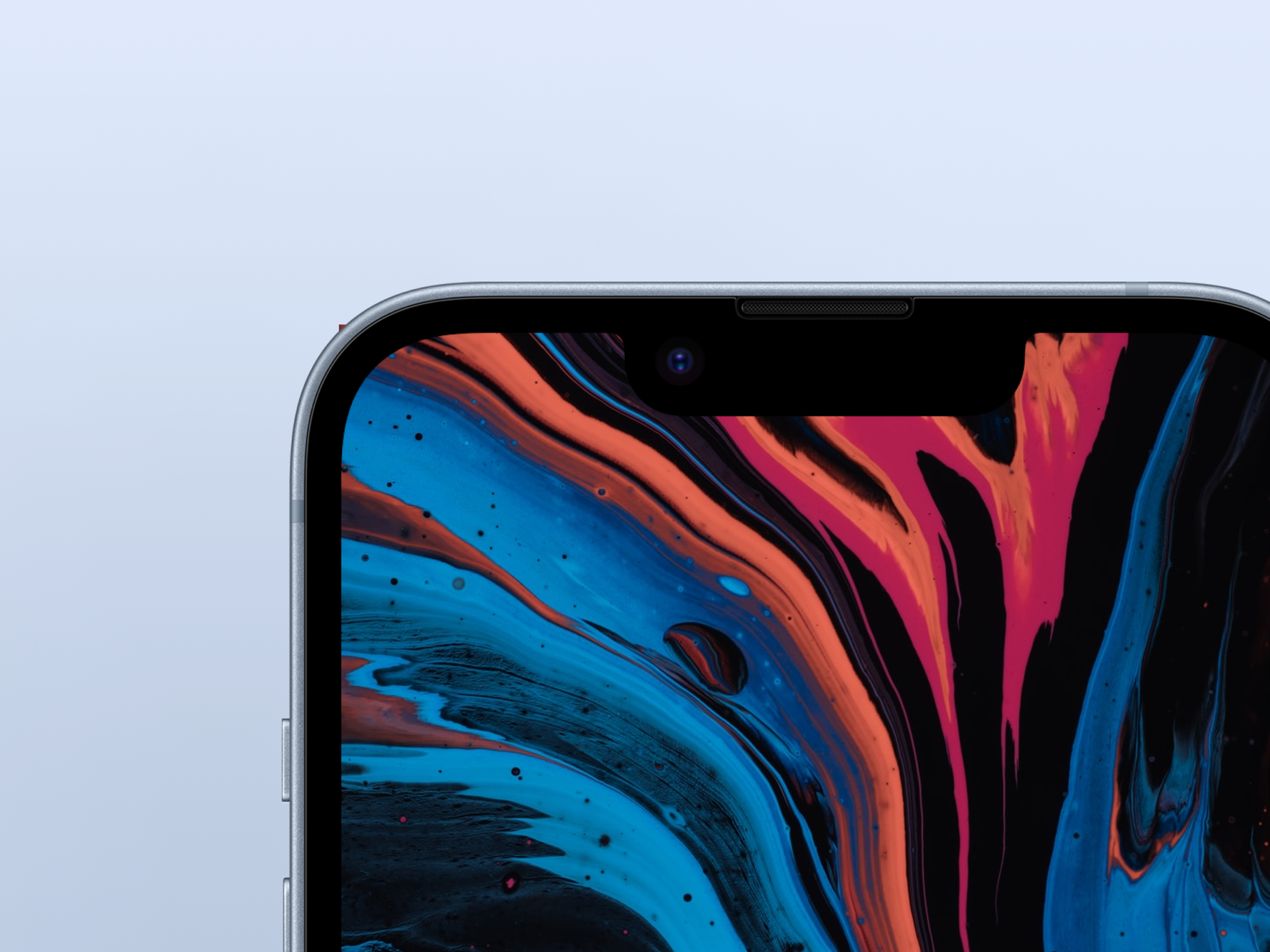
Final Thoughts
Despite our innovative approach and promising initial results, the project was ultimately de-prioritized due to critical business constraints. For this reason, it was not possible to test our solution with real users and thus make this new flow as impactful for the business as originally planned.
Selected Works

Mobile App Goal-Setting RedesignDiscovery Project@CoacHub 2022-2023
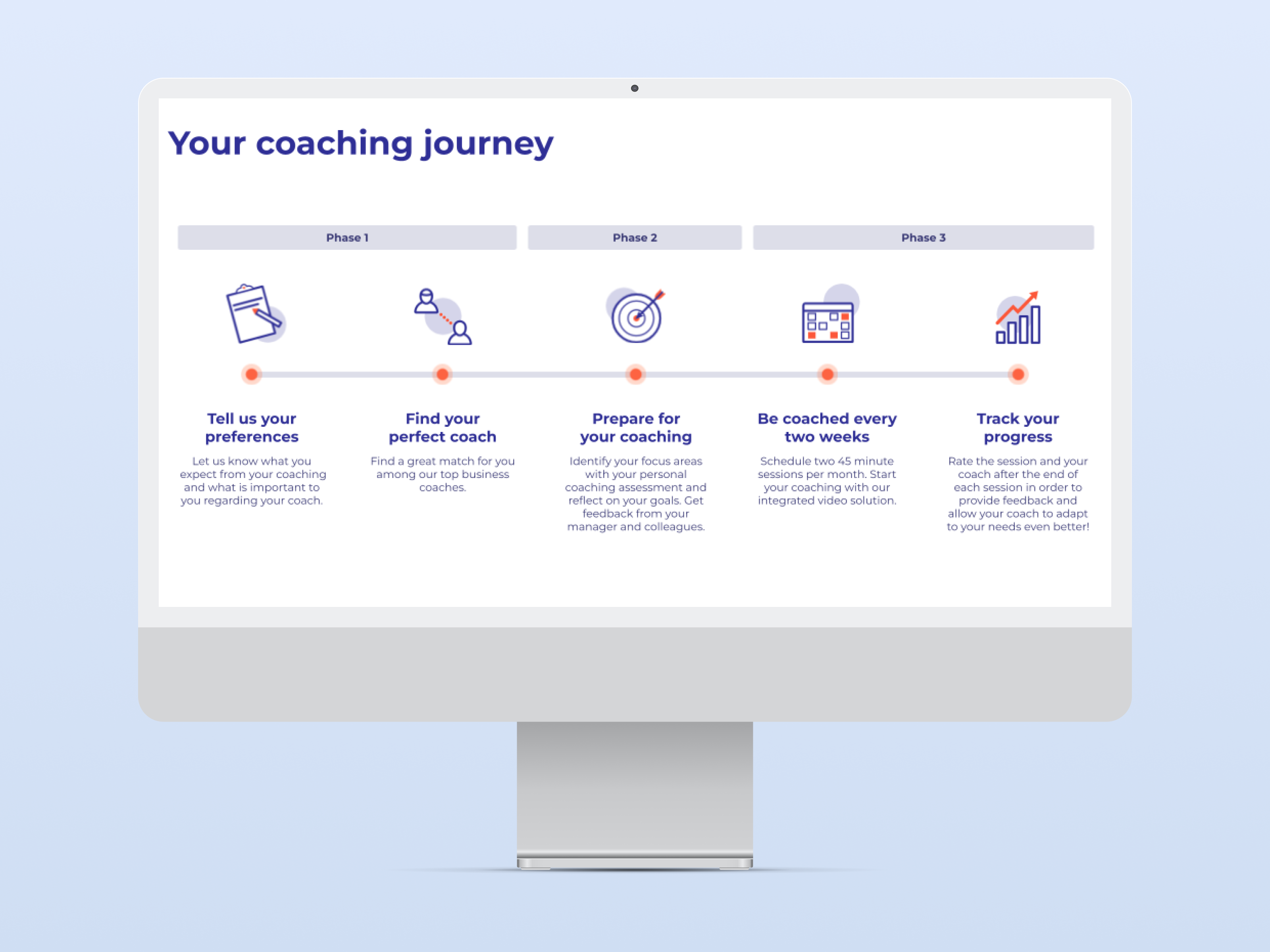
Pioneering User Feedback Strategy at CoachHubResearch Project@CoachHub 2023

Design Thinking for Social ImpactPersonal Project 2019